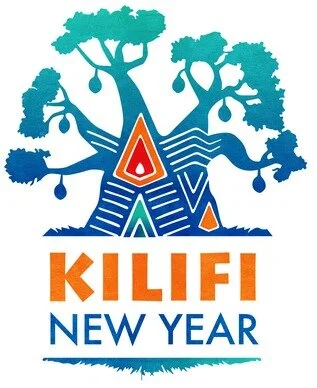Kilifi New Year: Celebrating the Influence of the Anti-Superstar
Kilifi New Year, an alternative electronic music festival that for the past two years has been held at Beneath the Baobabs in Kilifi, in its six years, has lent a mellow, consistent magic to end of year festivities in Kenya. Held over three days and three nights, Kilifi New Year 2020 brought over two thousand people to Kilifi town on Kenya’s coast. While still holding at it’s centre the presence of the DJ as the focal point around which all other activities converge as an electronic music festival standard, Kilifi New Year 2020 also maintained elements of the underground – not so much in terms of sound, or aesthetic, but in terms of its breezy, almost offhand approach to a good time. Even while talked about in grand terms, both by those who’ve attended it and those who are planning to, Kilifi New Year manages to maintain an unpretentious profile not only by providing a laid-back, colourful, musical arena, but also by representing and nurturing the anti-superstar.
Electronic music festivals, raves’ funky younger cousin, arose out of the need to bring the underground together, and on an international scale, this history has been betrayed, where the need for corporate and industry investment at EDM festivals puts the superstar DJ at its centre. This is almost true for Kilifi New Year, where those we would place as the superstar DJ equivalent played sets at prime times throughout the three days. However, it is their rise and trajectory that keeps them outside of this realm of the superstar, where they draw attention to what it means to honour their origins at the peripheral alternative, and to convert that location to their centre. Blinky Bill, for example, who played the first set of the New Year, is a product of this ‘underground’ playground, thus defining his anti-superstardom, and has left in his wake a slew of other electronic music artists who, with or without industry backing, have had the spotlight shift to them. Several of them performed at this latest KNYE iteration.
Bill Brewster, a celebrated British DJ, wrote about the history of the disk jockey in the book Last Night a DJ Saved My Life. In it, he says that “wherever DJing is headed, its history teaches us to keep our eyes on the underground, and in dance music, there’s always an underground...There’ll always be an underground and it will be filled with people who love music, not as a job but as the centrepiece to their life.”
This can be said for Kilifi New Year. Stemming from a culture of honest curiosity, it is all at once a confluence of several influences, and an individual identity in and of itself. It doesn’t ask to be seen, and is perfectly content presenting a stripped down version of play and delight in music that is characteristic of the underground. Unlike several other international electronic music festivals, there was an element of difference in Kilifi New Year 2020 – the line-up presented an understanding of music culture that predates and engages with several Kenyan and international artists in understated, yet impactful ways. It is also a cornucopia of subtle innovations in the festival-going experience in Kenya – take for example the simple intimacy of the Baobab stage, where attendees were given the space and materials to sit down and lounge: pillows and mkekas – even mattresses – were provided to this end. There was also the wellness centre, Kisima, where there was the chance to wind down with various meditative practices such as yoga amidst silence and gentle company. Kilifi New Year 2020 was uncomplicated, absent of performative pressures often abundant in Nairobi, which is where the majority of contemporary cultural and musical events happen, many of which tend to follow a similar script that leaves attendees longing for a more uncommon experience. At Kilifi New Year, there is a chance to form a conglomerate identity without having to compete with Nairobi’s established aesthetics. Kilifi New Year offers a refreshing alternative to all of this – bringing the anti-superstar on board, and having all their underground elements flavouring the festival experience.
But even while setting a standard for innovation, Kilifi New Year also aligns itself with a particular culture. Capturing the current zeitgeist, its Muze stage reflected the point where a certain musical imagination that has taken hold of the young, urban Kenyan population is right now. For example, Kilifi New Year brought Ochungulo Family (anti-superstars in their own regard) onto the Muze stage, a group central to the rise of gengetone in Kenya. Gengetone is a genre that has generated several conversations on Kenya’s contemporary musical identity, and while Kilifi New Year has previously seemed to remain on the edges by being the preserve of the alternative and electronic music makers and fans, by jumping right to the centre and hosting a group like Ochungulo Family, it lends a platform to this discussion, further complicating the music culture by bridging gaps and blurring boundaries of who is allowed where, even if there might be the angle of who’s hot right now – who people will pay to see.
Bill Brewster, in Last Night a DJ Saved My Life, writes, “As homogeneous, stadium-sized dance music continues to sweep the world, in its shadow there are already pockets of resistance [...] you can bet that sooner or later, out of these devious little scenes will come something interesting, and inevitably, something momentous.” Surely enough, Kilifi New Year, by celebrating the anti-superstar and their influence, is on it’s way there – if it isn’t already.



